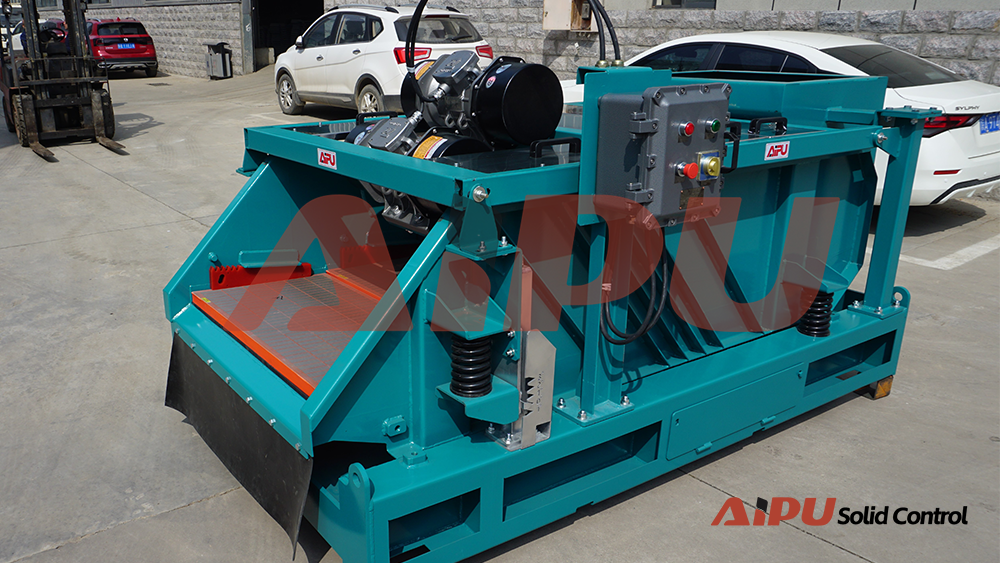How a Shale Shaker Works: The First Line of Defense in Drilling
In the complex process of drilling an oil or gas well, maintaining the properties of the drilling fluid, or "mud," is critical. The drilling fluid circulates down the drill string, out through the bit, and carries the drilled cuttings back to the surface. Once at the surface, this mixture of fluid and solids must be cleaned for the fluid to be re-used. The most critical piece of equipment in this initial cleaning process is the shale shaker. It serves as the primary, and most important, stage of solids control.
At its core, the function of a shale shaker is simple: to separate solid particles (cuttings) from the liquid drilling fluid. However, the engineering behind this separation is what makes it so effective.
The Basic Components:
The Vibrating Deck: This is the inclined, flat surface or series of surfaces where the separation occurs. The deck is where the screen panels are mounted.
The Screen Panels: These are the "filtering" elements, made of a wire mesh with precisely sized openings. Screen mesh size can vary greatly, from coarse to very fine, depending on the required level of filtration.
The Vibrator(s): These are high-speed, weighted motors attached to the deck. As they rotate, they create a vibrating or oscillating motion that is transmitted to the entire deck and the screens.
The Basket: This is the structure that houses the deck and the vibrators. It is mounted on springs or rubber shock absorbers that allow it to vibrate freely while isolating the vibration from the rest of the rig structure.
The Step-by-Step Process:
Influx of the Mixture: The unprocessed drilling fluid, laden with drilled cuttings of various sizes, is discharged directly from the wellbore onto the highest end of the vibrating screen deck.
Vibration and Separation: As the mixture hits the rapidly vibrating screen, two key things happen simultaneously:
Liquid and Fine Particles Pass Through: The liquid phase of the drilling fluid, along with particles smaller than the screen openings, pass through the mesh. This "clean" fluid is collected in a tank below the shaker and is sent to the next stages of the solids control system (e.g., desanders, desilters).
Solids are Conveyed: The vibrating motion, typically a linear or elliptical pattern, has a dual purpose. The vertical component of the vibration helps to fluidize the slurry and push liquid and fine solids through the screen. The horizontal component acts to convey the larger, separated solids uphill along the inclined deck.
Solids Discharge: The drilled cuttings, now relatively dry, are transported up the deck's incline by the vibrating motion. They eventually reach the discharge end of the shaker and are thrown off into a separate collection pit or conveyor system for disposal.
The Role of Motion and G-Force:
Linear Motion: Ideal for drying solids and handling high volumes of fluid. It provides a strong conveying action, efficiently moving cuttings off the screen.
Elliptical Motion: Often used for faster separation of finer particles with lower flow rates. The ellipse can be adjusted to be more aggressive (for conveyance) or more vertical (for separation).
G-Force: The intensity of the vibration is measured as a G-force. A higher G-force allows the shaker to use finer mesh screens and process thicker, heavier muds by providing more energy to force fluid through the mesh and break the surface tension.

Why It's So Crucial:
A properly functioning shale shaker is the cornerstone of an efficient drilling operation. By removing the larger cuttings at the first opportunity, it:
Protects Downstream Equipment: It prevents finer, more expensive equipment like desilters and centrifuges from being overloaded.
Reduces Drilling Fluid Costs: It allows for maximum recovery and re-use of the valuable liquid phase, minimizing the need for fresh fluid and chemical additives.
Improves Drilling Efficiency: Clean mud leads to better lubrication, cooler drill bits, and improved rate of penetration.
In summary, the shale shaker is a deceptively simple machine that uses controlled vibration and precision screens to perform the vital, first-cut separation that keeps the entire drilling fluid system running smoothly and cost-effectively.







